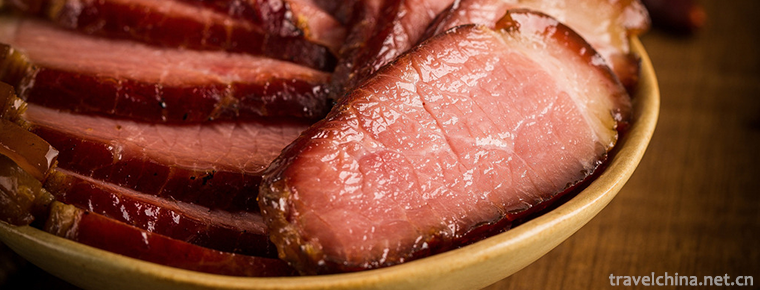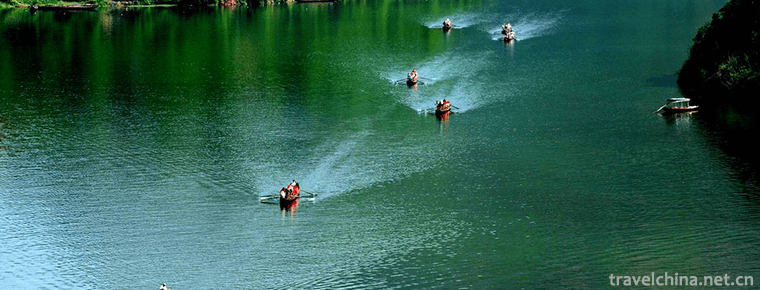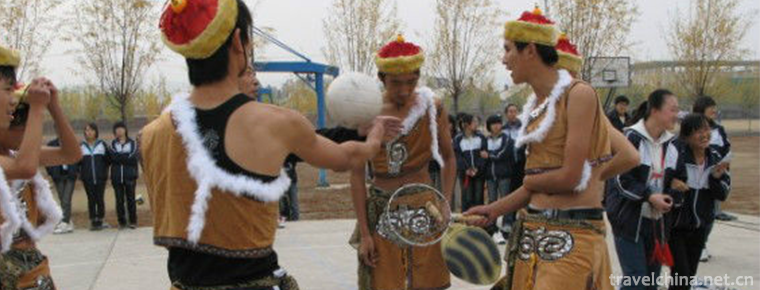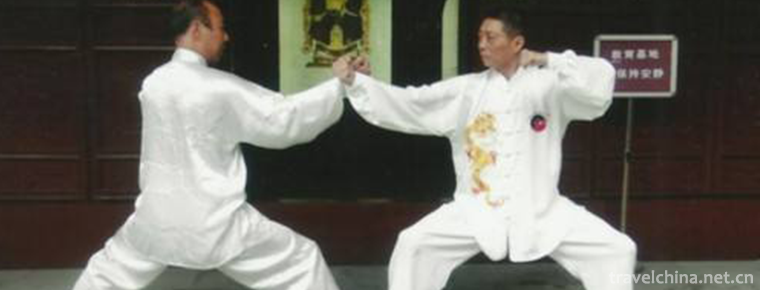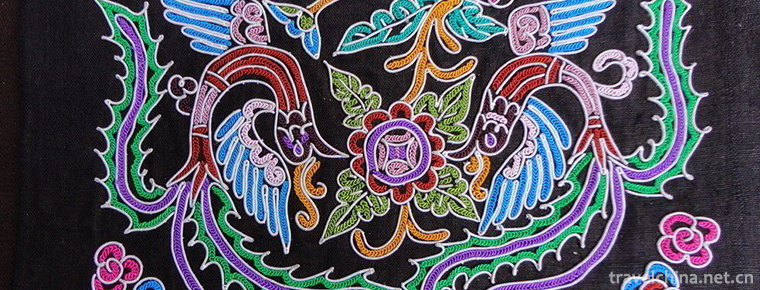Jiangxi opera
Jiangxi opera
Gan Opera is a traditional opera which sings high-pitched, random-play, Kun Opera and other tunes in a multi-tone way. The dialect used is Gan dialect. Its origin and predecessor is Yiyang tune, which is one of the four famous ancient tunes. The two schools of Yiyang Opera Raohe Ban and Xinhe Ban met in 1950 and then entered Nanchang, the capital of the province. In 1953, Jiangxi Province Gan Opera Troupe was formally established, and Yiyang Opera was renamed Gan Opera.
The tunes of Gan Opera are mainly Erhuang and Xipi. Other tunes include Qin Opera, Gaopuzi Opera, Zhejiang Opera, Pujiang Opera and Wennan Opera. Among them, the graceful and beautiful tunes of Wennan Opera are especially popular among the masses. After liberation, the art of Gan Opera was reformed, and excellent traditional plays such as Liang Zhu's Marriage, Return of Soul and Dou E's Injustice were arranged and adapted. The development of Gan Opera has exerted great influence on the formation of 44 operas, such as Peking Opera, Sichuan Opera, Hunan Opera and Qin Opera.
In 2011, it was selected as the third batch of national intangible cultural heritage list.
Historical evolution
origin
Gan Opera, whose origin and predecessor is Yiyang Opera, is one of the four famous ancient tunes. In the 1950s, Yiyang Opera was renamed Gan Opera. Gan Opera is known as the "living fossil" of Chinese drama and the "originator" of Peking Opera. Its development has had a far-reaching impact on the formation of Peking Opera, Sichuan Opera, Hunan Opera, Qin Opera and other operas.
The formation of Gan Opera has gone through a quite long historical period. After the Song and Yuan Dynasties, Southern Opera began to spread in the southeastern provinces of China. Raozhou and Guangxin prefectures in northeastern Jiangxi were once under the jurisdiction of Jiangsu and Zhejiang provinces, and Hongwu in the early Ming Dynasty was included in Jiangxi Province. Because of convenient transportation and trade, Nanxi Opera was introduced to Yiyang County of Guangxin Prefecture. At that time, Nanxi Opera, which settled down in Yiyang County, was a play of "Mulian Save Mother". Because of the influence of local religious thought, this kind of opera has gradually changed, thus forming a kind of southern opera with Jiangxi characteristics, known as "Yiyang Tune", which is in line with other southern opera tunes in Jiangsu and Zhejiang regions. During Chenghua and Hongzhi years of Ming Dynasty (1465-1505), Zhu Yunming's "Gong Tan" mentioned Yiyang Tune in Jiangxi Province in his commentary on Southern Opera. As the main tune of Gan Opera, Yiyang Tune is the oldest.
Development of Yiyang Cavity
After the formation of Yiyang Opera, in addition to the original Mulian Opera, it mainly plays historical stories and myths and legends that are popular with the masses, such as Biography of Fengshen, Biography of Three Kingdoms, Biography of Expedition to the East, Biography of Expedition to the West, Water Margin, Biography of Yuefei, Biography of Travel to the East, Biography of Travel to the South, Biography of Journey to the West, Biography of Journey to the North and Biography of Tieshu. There are twelve kinds. Like Mulian Opera, each is performed in seven days. The appearance of this kind of Liantai opera is the development of Yiyang Opera. It has laid a solid foundation.
With the development of other voices in Nanxi Opera. In the Ming Dynasty, Yiyang Opera also transplanted some operas from Southern Opera and legends, such as Pearl Story, Water Sale Story, Great Wall Story, Bayi Story, Sanyuan Story, Parrot Story, White Snake Story, Shiyi Ji, Luoyang Bridge Story, Qingfeng Pavilion, Wupen Ji and Qianshu. With the increase of these legendary operas, the content of Yiyang Opera is more abundant, and the development of Yiyang Opera is further advanced.
In the areas where Gan Opera was popular, Yiyang Opera was mainly sung in the Ming Dynasty. After the early Qing Dynasty, the Yiyang Opera retained here was severely damaged because of the destruction of the war. Most of the original series were lost, and only Yushan, Yiyang, Guixi, Wannian and Poyang were the popular areas. At that time, Yiyang Opera, which was popular among the people, was called "Gaoqiang" by most people. It was active in Gaoqiang Class of Yiyang and Wannian. Eighteen Gaoqiang Opera were left to maintain its normal performance activities. This situation continued until the Guangxu period, so that many Yiyang Opera Troupes could not exist independently. Because of the rise of various tunes of random play, some theatres in northeastern Jiangxi began to sing other tunes besides high tunes. After hundreds of years of development, Gan Opera finally became a comprehensive high, Kun and chaotic three-tune drama.
This Yiyang tune is created by inheriting the tradition of Southern and Northern Opera and combining with local characteristics. Its basic reason is that it sings the tune of Southern Opera in Yiyang dialect, which forms a new tune with Jiangxi characteristics. This new tune, in the stage of Mulian Opera, also has a strong religious music color. Later, through the performances of Lian Tai Ben Opera and Legendary Opera, it got rid of the influence of religious music and became the most popular and influential opera tune in Nan Opera.
In terms of music system, the Yiyang tune of Gan Opera is composed of various music cards. Looking from the existing music cards, it mainly sings Nanqu and also belongs to Beiqu. According to the characteristics of musical tunes, such tunes can be divided into , , , and other categories. For a long time, this kind of Yiyang tune has been a form of dry singing and vocal assistant tune. Because it is a kind of assistant tune with a false voice raised eight degrees, it calls itself "high tune" for the tone of this vocal assistant tune. Gan Opera began with Yiyang Opera in Ming Dynasty and absorbed various tunes of Chaotian Tan and Kun Opera in Qing Dynasty, making it a multi-tone opera with local characteristics.
Root tracing
Gan Opera, whose origin and predecessor is Yiyang Tune, is one of the four famous ancient tunes. The two schools of Yiyang Opera Raohe Ban and Xinhe Ban met in 1950 and then entered Nanchang, the capital of the province. In 1953, Jiangxi Province Gan Opera Troupe was formally established, and Yiyang Opera was renamed Gan Opera.
Yiyang Opera is a bright pearl in the history of Chinese opera. Yiyang Opera was born in Yiyang, Jiangxi Province. As soon as Yiyang Opera was born, it quickly spread to the Chinese opera stage with its unprecedented artistic charm, branded an indelible mark on the Chinese opera stage, played the highest melody in the history of Chinese opera, created a new form of Chinese opera, and opened a new chapter in the history of Chinese opera. The free performance style and high melody of Yiyang Opera are the condensation of harsh social reality.
Since the Southern Song Dynasty, when the Yuan Dynasty entered the Ming Dynasty, the war and famine in Yiyang and its adjacent areas have been continuing. Hongwu 24 years, Yiyang households, 19,718 households, population 51,653. By the sixth year of Shunzhi in Qing Dynasty, the population of Yiyang County was only 11,801, with a sharp decline of four fifths. It is the serious survival crisis that forged Yiyang cavity into a "high cavity". Yiyang cavity is the manifestation of the tenacious vitality of Yiyang people. Yiyang people are "vigorous and self-motivated, respectful and righteous," upright and upright, advocating religion. Yiyang cavity melts the character of Yiyang people. Through the aesthetic activities of the opera, the artistic enjoyment of self-release, self-decompression and self-intoxication was achieved, and finally the spiritual emancipation and self-value affirmation were achieved. In the Ming Dynasty, the population of Yiyang declined sharply. "Those who had their own households and went away, died and migrated, and were born without their own land." Therefore, we should have a deeper understanding and explanation of "Yiyang's harmony" during Jiajing period.
After the founding of PRC
After the founding of the People's Republic of China, Gan Opera entered Nanchang in 1953 and established Jiangxi Gan Opera Troupe. Thereafter, a drama school was founded. In 1960, Jiangxi Gan Theatre was established, which consists of three groups. It is composed of two groups, Guangzhou and Rao. The Qingyang Opera of Jiujiang, which is popular in Duchang and Hukou, is also included in the category of Gan Opera. By 1985, there were ten Gan Opera Troupes in Jiangxi Province. He has performed in Wuhan, Changsha, Guangzhou, Fuzhou, Shanghai, Nanjing, Tianjin and Beijing, as well as in Anhui, Shandong, Jilin, Liaoning and Heilongjiang. In addition, a professional troupe specializing in singing high tunes was founded in Yiyang in 1958.
In the 1950s, many famous actors appeared, such as Pan Fengxia, Zhu Yuexian of Guangxinlu, Tongqing Zhuofusheng of Xiaoxinlu, Chen Youhong, Xiao Guixiang of Qingyi, Chen Guiying and Hu Ruihua of Danjiao of Lao Dan Li Juxiang and Raohe Road. Young and middle-aged actors include Xiaosheng Wanliangfu, Xiao Manru, Zhengsheng Yan Zhijian, Huadan Duan Rili, Xiong Zhenshu, Qingyi Xiong Zhongbin, Gao Jinxiang, Tiedan Zouli, Tong Mingming, Wudan Hou Airong, Chen Lifang, Laodan Xiong Liyun, Huafa Wang Yanzhen, clown Liu Anqi, etc.
Be like a dry tree which again sprouts leaves in the spring
After the founding of the People's Republic of China, Gan Opera developed like a dead tree in spring. In 1950, it entered Nanchang, the capital of the province, from northeastern Jiangxi Province. In 1953, Jiangxi Gan Opera Troupe was formally established. A training course for Gan Opera performers was soon established, and a number of Yiyang opera students were trained. Nine Gan Opera Troupes have been established successively in Northeast Jiangxi (of which Yiyang County is called Yiyang Opera Troupe). Jiangxi Gan Theatre was established in 1960. At that time, as a kind of voice of Gan Opera, Qingyang Opera discovered in Jiujiang area was also included in Gan Opera.
In 1960, Heilongjiang and Jilin provinces in Northeast China sent people south to transplant Gan Opera, and a prosperous scene of "flowering in the South and flowering in the north" appeared. So far, Gan Opera has not only been welcomed by provincial audiences, but has also been to Wuhan, Changsha, Fuzhou, Xiamen, Shanghai, Nanjing, Tianjin, Beijing, Hefei, Jinan, Shenyang, Changchun, Harbin and other places to perform. In the same aspect, through the reform of Yiyang Opera, Premier Zhou has won the honor of "beautiful, beautiful and sweet".
After the Third Plenary Session of the Eleventh Central Committee of the Communist Party of China in December 1978, Gan Opera, which was destroyed during the Cultural Revolution, was revived. In addition to Jiangxi Province Gan Opera Troupe, 11 Gan Opera Troupes (including Xingguo County Ganzhou Opera Troupe) have been restored throughout the province. They originally belonged to the popular areas of Gan Opera, but now they can see the performance activities of Gan Opera.
On May 20, 2006, Yiyang Opera was listed in the first batch of national intangible cultural heritage list with the approval of the State Council.
Major repertoire
Gan opera can be divided into three categories: Yiyang, Qingyang and Randomly Played. There are so-called "eighteen editions" in Yiyang Opera, namely "Qingmei Hui", "Gucheng Hui", "Fengboting", "Dingtianshan", "Golden Mink Ji", "Longfeng Jian", "Pearl Ji", "Selling Water Ji", "Great Wall Ji", "Bayi Ji", "Shiyi Ji", "Nautilus Ji", "Qingfengting", "Luoyang Bridge", "Sanyuan Ji", "White Snake Ji", and "Shaking Money". Shu and Wu Pen Ji, by 1949, can only perform four main plays and some single folds; Qingyang Opera, mostly from the legends of the Ming Dynasty, has more than 80 complete repertoires, such as Tu Fu Ji, Baihua Ji, San Tiaojian, Xiangqiu Ji, Shuang Cui Ji, Wu Gui Ji, and so on; there are 38 kinds of random bullet repertoires in Qingdaoguang period, which are called "Old Road Opera". Among them are "Sanguantang", "Four Countries Qi", "Yumenguan" and other popular operas such as "Sacrifice Platform", "Huatian Mistake", "Luhua River" and other western-skin operas such as "Erhuang Tu", "Lantian Belt", "Longfeng Pavilion" and so on. There are also "Wanli Hou" and "Dajin Guan" of Erfan dial-zi operas. Later, some operas have been transplanted from Hui opera opera, Wu opera and Wennan Ci. Most of them have no definite words in outline, which is called "waterway drama". After liberation, Gan Opera reorganized and adapted the repertoires as follows: Yiyang Opera "Pearl Story", "Wei Chigong", "Zhang San borrowed boots", "Dress and cry City", "Journey to the Western Regions", "Return to the Soul"; Qingyang Opera "Double Bye Moon", "Swords from Hundred Flowers", "Story of the Western Chamber", "Marriage of Liang Zhu", "Borrowing Women Chongxi", "Biography of White Snake", "Mad Curse Hall" and "Meng Jiangnu"; Kun Opera. Wukong borrows fans, Xiangliang stabs Liang and so on. The modern plays created include A Group of Mu Guiying, Red Propaganda, Side Raid, Seed Piracy, Iron Shoulder and Red Heart, Memorial Tablet Expedition, etc.
Famous actor
The famous actors of Gan Opera are Xu Xiaolan, Yu Jianghua, Jiangling Jing, Yan Youyuan, Yang Guixian, Pan Fengxia, Zhuo Fusheng, Tong Qingchu, Xiao Guixiang, Chen Guiying, Zhu Yuexian, Hu Ruihua, Duan Rili, Wanliangfu, Tu Linghui, Chen Li, etc.


-
Sanyoudong Scenic Area
The Three Tours Cave Scenic Area is located outside Xiling Gorge, about 10 kilometers away from Yichang. There are two allusions to the name of Sanyou Cave. The Tang poets Bai Juyi, Bai Xingjian.
Views: 136 Time 2018-12-19 -
Xinglong mountain
Xinglong Mountain is the nearest National Natural Forest Reserve to Lanzhou City. It is located five kilometers southwest of Yuzhong County, Lanzhou City, 60 kilometers away from Lanzhou City.
Views: 171 Time 2018-12-24 -
Floral water bay hot spring resort
Huashuiwan Hot Spring Resort is located at the foot of Xiling Snow Mountain in Dayi County, Chengdu, Sichuan Province, surrounded by mountains on all sides. National AAAA scenic spot..
Views: 215 Time 2019-01-17 -
Lao Leshan Tourist Scenic Spot
Lao Leshan is located in the south of Henan Province, 9 kilometers southwest of Zhumadian City and 8 kilometers west of Queshan County. National Highway 107.
Views: 135 Time 2019-01-29 -
Manchu Pearl Ball
Pearl ball is a traditional sport of Manchu, originally known as pearl picking, which originated from the ancient pearl picking production activities of Manchu. In the age of Taizu Nuerhachi in the Qi.
Views: 259 Time 2019-05-20 -
Gentle boxing
Mianquan is a kind of uniform, soft, round, coherent, rigid and soft traditional boxing, which belongs to the intangible cultural heritage of Shanghai. Its movement is soft like cotton, the shape and .
Views: 130 Time 2019-06-04 -
Aquatic horsetail embroidery
Horsetail embroidery is a special embroidery technique inherited from generation to generation by Chinese aquarium women, which is the oldest and most national characteristic. It takes horse tail as a.
Views: 130 Time 2019-06-16 -
University of International Relations
University of International Relations (University of International Relations), referred to as "Guo Guan", is located in the western suburb of Beijing. Ministry of Education of the People's R.
Views: 382 Time 2019-09-22 -
Biological resources of Suining
There are many kinds of biological resources in Suining. There are more than 1500 varieties or strains of biological resources found and utilized in Suining, including more than 1000 plant resources and 367 cultivated varieties of crops. The territory belongs.
Views: 322 Time 2020-12-16 -
Leshan Education
In 2018, Leshan Normal University, School of engineering and technology of Chengdu University of technology and Leshan vocational and technical college enrolled 16051 students, including 52775 students, 13837 graduates and 2509 full-time teachers..
Views: 351 Time 2020-12-17 -
Meishan transportation
Meishan occupies an important traffic area at the South Gate of Chengdu, including Chengdu Leshan expressway, Chengdu Ya'an expressway, Chengdu Ziji Luzhou Expressway passing Renshou City, Leya Expressway passing through Hongya City, and Suizi .
Views: 331 Time 2020-12-18
